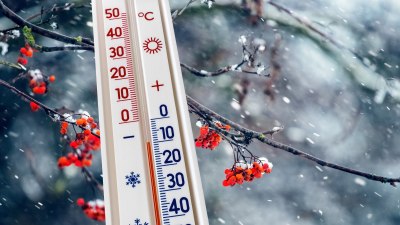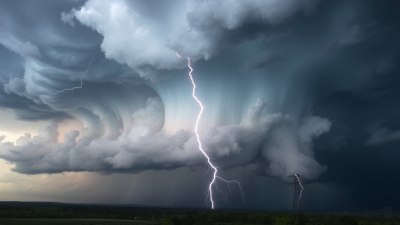How to Know If You’re Training for a Marathon or Just Escaping a Heatwave
Learn to distinguish marathon training from just running to escape the summer heat.

Image by agnvisuals1 on Freepik
As the temperature rises and summer bears down with its scorching rays, many outdoor enthusiasts find themselves hitting the pavement with a determination that can often be mistaken for serious marathon training. However, there exists a fine line between training for an event that demands discipline and simply trying to escape the relentless heat. If you’ve ever found yourself questioning whether your vigorous running sessions are aimed at preparing for that long-awaited marathon or just a well-meaning attempt to cool off, this article aims to clarify that distinction.
Understanding Your Motivation
The very first step to discern if you’re truly training for a marathon is understanding and assessing your motivation to run. Marathon training requires a clear set of goals and a structured plan, whereas running in hot weather can sometimes be a spur-of-the-moment decision. Think about why you started running in the first place. If your intention has shifted from a race preparation to merely escaping the heat, you might be experiencing a seasonal motivation shift. Marathon training typically includes setting a race date, which helps to create a timeline and structure, whereas running away from heat might be more spontaneous and unstructured.
Establishing a Training Plan
To effectively train for a marathon, one needs a comprehensive training plan that outlines weekly mileage, varying paces, and includes long runs. If you find yourself simply jogging to beat the heat without a real plan, it might be time to refocus your efforts. A solid marathon training program often includes progressive increases in distance each week, tapering before race day, and dedicated rest days. Without these elements, your running might be misaligned with serious training. Besides distance, consider the types of runs you are doing. Are you incorporating speed work, tempo runs, and hill training? These are essential components of marathon training. If your running sessions mostly consist of relaxed jogs in an attempt to dodge the summer heat, it’s a clue that you may be just escaping the temperatures rather than working towards a marathon goal.
Physical Indicators of Marathon Training
Those dedicated to marathon training often experience certain physical indicators that differentiate them from casual runners dodging heat waves. One noticeable difference is the effect on your body over time. Marathon preparation often leads to increased endurance, strength, and even changes in body composition. If you’re running more regularly and seriously, you might notice a change in your stamina, improved cardiovascular health, and muscle tone. If you’re just running in sweltering conditions, you might be more fatigued or dehydrated, which is not conducive to progressive improvement in performance. Keeping track of your running pace is another way to gauge your training intensity. Over time, marathon training typically leads to improved running efficiency and speed, while a casual jog in the heat might not yield similar gains.
Setting Goals for Your Runs
Marathon training is goal-oriented. Thus, you should be setting and evaluating goals for your runs. Aim to break personal records, push for longer distances, or beat your previous times. If you find that your goals revolve around simply completing a run without any specific benchmarks, you might be veering further away from marathon preparation. Setting tangible, feasible goals will not only keep you motivated but also orient your running intensity toward competitive training. Keep in mind that marathon preparations often include gradual improvements in pacing, working on hydration strategies, and planning nutrition before and after long runs. Casual running in the heat may not involve this calculated approach. To clarify your stance, establish short-term goals for running that require a commitment to a structured training schedule.
Community Engagement and Support
Another big differentiator between marathon training and simply running to escape the heat is community involvement. If you’re seriously preparing for a marathon, there’s a good chance you’ll engage with running groups or clubs, participate in training runs, and seek out coaches or mentors. This network provides support, accountability, and knowledge that create a solid training foundation. Those just running to stay cool may not participate as actively in this larger community and might prefer the solitude that comes with running when temperatures are high. Run clubs are structured around solid training paces and collective goal accomplishments, which are essential elements of marathon prep.
Weather Considerations During Training
The weather is another key aspect that influences whether you’re training for a marathon or just trying to escape the heat. True marathon training requires adapting to a variety of weather conditions, including running in heat, rain, and wind. This adaptability is essential to prepare for race day, which does not guarantee perfect weather. A marathon runner should be prepared to log miles regardless of conditions rather than only opting for run sessions when avoiding sweltering heat. Developing strategies for safely running in the heat—such as hydration practices and adjusting workout times—is also critical for marathon fitness.
Listening to Your Body
Training for a marathon often requires an understanding of how to listen to your body. Recognizing when to push through fatigue and when to give yourself a break is key in establishing a sustainable training routine. Doing so when simply running to escape the heat can lead to overexertion without the same reward of progress. Pay attention to the signals your body sends. Are you feeling more tired than motivated? Is your heart rate elevated continuously without feeling the benefits of improved performance? Reflecting on how your body feels can help navigate your training focus.
Ultimately, distinguishing between training for a marathon and simply escaping a heatwave lies in clarity of purpose and intention. By assessing your motivations, establishing a structured training plan, setting concrete goals, engaging with a running community, and listening to your body, you can accurately gauge your commitment towards marathon preparation. Align your training efforts with your goals to ensure you’re not just running to dodge the heat but actively working towards that marathon finish line. Whether you’re preparing for race day or simply venturing outside for a cool breeze on a summer afternoon, every run counts and can contribute to your overall fitness journey. Now that you’re equipped with the knowledge of how to assess your training efforts, lace up those shoes, maintain focus, and embrace the running experience, whatever your motivation may be. With awareness and determination, you can fully commit to your marathon training or enjoy the joy of running in summer for what it truly is—a chance to breathe, disconnect and escape.











